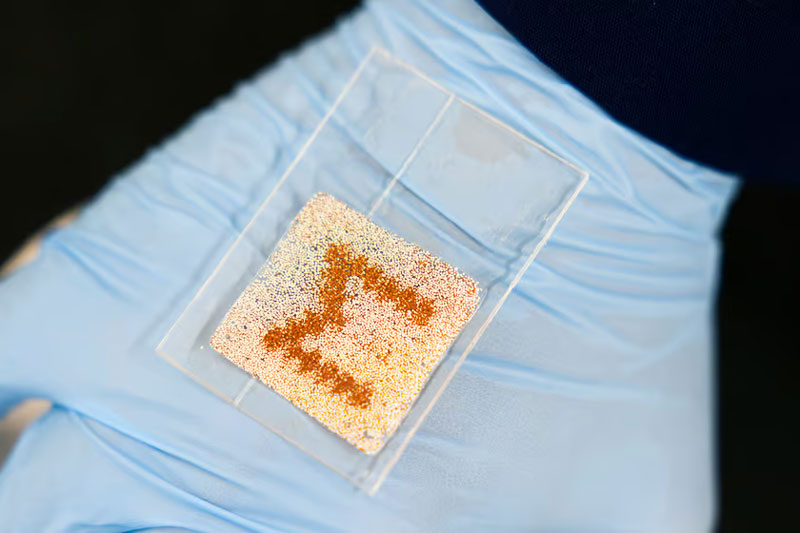Squids, and cephalopods in general, have amazing skin that can change patterns at will, which helps with camouflage, hunting and finding mates. Scientists from the University of Michigan were inspired by this feature of mollusks and created a pigment display sensitive to magnetic fields, which does not require any electronics to operate.

Image source: Jeremy Little/Michigan Engineering
«This is one of the first times that mechanical materials use magnetic fields for system-level encoding, information processing and calculations,” the developers explain. Today, for similar and other interesting purposes, metamaterials are being invented, essentially engineering solutions consisting of a set of materials and structures. They are usually complex enough to scale down, making it difficult to use metamaterials in computing and display systems. Scientists at the University of Michigan have overcome this limitation by introducing a lightweight and flexible display that responds only to magnetic fields.
Scientists needed squid skin with chromotophore cells as an example of what display resolution is best to rely on so that the image is normally perceived by human vision. The sizes of natural “pixels” were simply borrowed from mollusks. The metamaterial invented by scientists was based on completely different operating principles.
In a way, the researchers invented the E Ink display, but in their own way. If E Ink’s electronic ink is a pigment suspension that reacts to the polarity of the electromagnetic field (charge on the control matrix), then in the case of a magnetic display the so-called Janus particles were used. This is a wide range of materials with two or more different properties. The simplest example of a Janus particle is a compass needle. Different ends of the arrow have different polarities and you can use a magnet to make it rotate one way or another.
Created at the University of Michigan, the Janus particles consisted of ferromagnetic microparticles of neodymium (NdFeB) and superparamagnetic iron oxide nanoparticles (SPION) on one side, and a pigment such as titanium oxide (TiO2) on the other. Accordingly, they were orange at one end and white at the other. By changing the polarity of a magnet brought to the screen, it was possible to make it orange or white, and if several small magnets were placed behind the screen in a given manner, then it was possible to encode the image – when shaken, the magnetized particles would simply gather at the magnets with the appropriate polarity.
The nuance of using particles with NdFeB and SPION is that neodymium reacted to a strong magnetic field, and iron reacted to a weak one. In a weak field, using a special key – a pattern of magnets under the screen, the display showed a secret image that was invisible when placed above a strong magnet. There can be several such keys with their own magnetic pattern configuration and each case will have its own image.
Scientists believe that in this way it is possible to record barcodes on work clothes and other information that cannot be hacked or opened, because the device does not have an electronic part. Placing the screen in a strong magnetic field returns the overall “neodymium” image, hiding the secret “iron” one. Such a display does not require power or electronics, which can be used.